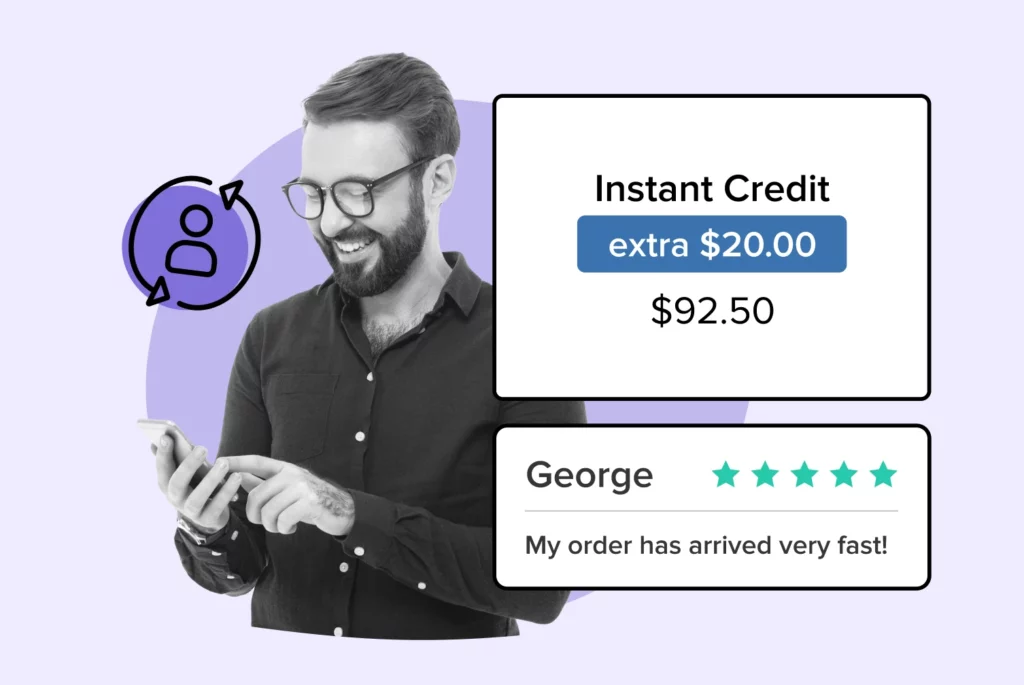
The Ultimate Guide to Customer Churn in Ecommerce: Strategies to Prevent and Retain Customers
Discover the ultimate guide to customer churn e-commerce: how to prevent churn, retain customers, and foster long-lasting customer loyalty.
Shipping, Tracking & Notifications
Boost customer experience and reduce support tickets
Realtime order and shipment tracking
Proactive order and shipping notifications
AI-Enhanced Discounted Labels
Predictive pre-purchase estimated delivery dates
Self-Serivce branded order tracking
Effortless experience delivered
Identify and Resolve Order Issues
Realtime order and shipment tracking
Make returns profitable and delight customers
Flexibility to define any return destinations & conditions
Simplify returns for your customers and team
Incentivize exchanges over returns
Returns management made easy for your team
Returns management made easy for your team
Easy claims and smart upsells
Understand why your customers are returning
In-Store & Curbside Pickup
Unify the online and the in-store experience
Hassle-free pickup experience for customers
In-Store dashboard to keep operations streamlined
In-Store and Online orders unified
Drive foot-traffic to your stores
Shipping, Tracking & Notifications
Boost customer experience and reduce support tickets
Realtime order and shipment tracking
Proactive order and shipping notifications
AI-Enhanced Discounted Labels
Predictive pre-purchase estimated delivery dates
Self-Serivce branded order tracking
Effortless experience delivered
Identify and Resolve Order Issues
Realtime order and shipment tracking
Make returns profitable and delight customers
Flexibility to define any return destinations & conditions
Simplify returns for your customers and team
Incentivize exchanges over returns
Returns management made easy for your team
Returns management made easy for your team
Understand why your customers are returning
In-Store & Curbside Pickup
Unify the online and the in-store experience
Hassle-free pickup experience for customers
In-Store Dashboard to keep operations streamlined
In-Store and Online orders unified
Drive foot-traffic to your stores
Boost customer experience and reduce support tickets
Realtime order and shipment tracking
Proactive order and shipping notifications
AI-Enhanced Discounted Labels
Predictive pre-purchase estimated delivery dates
Self-Serivce branded order tracking
Effortless experience delivered
Make returns profitable and delight customers
Flexibility to define any return destinations & conditions
Simplify returns for your customers and team
Incentivize exchanges over returns
Returns management made easy for your team
Equip your team for precise return checks.
Easy claims and smart upsells
Understand why your customers are returning
Unify the online and the in-store experience
Hassle-free pickup experience for customers
In-Store Dashboard to keep operations streamlined
In-Store and Online orders unified
Drive foot-traffic to your stores
Find the answer to all your questions
Take a step by step trip through our functionality to see how we can improve your ecommerce processes.
Explore the most comon questions about WeSupply
Calculate the ROI that WeSupply can bring you
Request a no strings attached review of your current shopping experience and missed conversion opportunities
Read actionable articles on how to optimize your post-purchase experience and decrease support tickets
Get inspired by stories of how our customers implemented an effortless post-purchase experience
Wondering if WeSupply is a good fit for you? Read through our use cases to see how we can help you increase conversion & improve CX!
A Deep Dive into Top Companies' Order Tracking & Returns Strategy
Find the answer to all your questions
Explore the most comon questions about WeSupply
Calculate the ROI that WeSupply can bring you
Request a no strings attached review of your current shopping experience and missed conversion opportunities
Take a step by step trip through our functionality to see how we can improve your ecommerce processes.
Read actionable articles on how to optimize your post-purchase experience and decrease support tickets
Get inspired by stories of how our customers implemented an effortless post-purchase experience
A Deep Dive into Top Companies' Order Tracking & Returns Strategy
Wondering if WeSupply is a good fit for you? Read through our use cases to see how we can help you increase conversion & improve CX!

In today’s fiercely competitive ecommerce landscape, retaining customers is more critical than ever. The ability to keep existing customers loyal and coming back for more is the backbone of a successful ecommerce business. But how can you ensure that your customers remain loyal, and why does it matter? In this blog post, we’ll dive into the importance of customer retention and its impact on brand promotion and profitability. We’ll also explore various factors affecting customer retention, strategies for calculating and improving customer retention rate, key metrics to consider, and how to implement an integrated approach to boost customer loyalty.
Understanding customer retention rate involves analyzing factors that contribute to loyalty and developing strategies for long-term success.
Investing in brand promotion, focusing on customer satisfaction, quality & service, and leveraging feedback are key strategies to improve retention rates.
Monitoring market trends & adapting methods can lead to higher customer retention rates while also aiding business growth.
WeSupply boosts e-commerce retention through enhanced customer satisfaction and brand experiences. Leveraging CSAT and NPS tools, along with features like tailored surveys, efficient returns, order tracking, and loyalty programs, it helps businesses understand customer needs, minimize returns, and maximize value. Additionally, WeSupply enhances brand loyalty with its branded tracking page, returns portal, and notifications, creating a cohesive and branded customer journey that deepens engagement and loyalty.
Customer retention rate is a crucial metric for businesses, reflecting the percentage of customers who remain loyal over a specific period. It’s a key indicator of how well your company can satisfy customers and maintain their loyalty. A high customer retention rate is linked to brand promotion, profitability, and long-term success.
However, comprehending customer retention goes beyond mere numerical tracking; it entails pinpointing the elements that drive customer loyalty and devising effective plans to tackle them.
Customer retention rate is defined as the percentage of customers who stay loyal to a company within a given time frame. It’s a vital factor in business as it contributes to:
Cost savings
Revenue growth
Customer satisfaction
Competitive advantage
Effective customer retention management involves implementing strategies to maintain and improve customer loyalty, satisfaction, and overall business performance.
Various facets of a company’s market position can be favorably impacted by a high customer retention rate. Some benefits of a high customer retention rate include:
Existing customers are more likely to spend more on new products than first-time customers, leading to higher profits.
A high customer retention rate increases the lifetime value of customers.
A high customer retention rate is key to driving sustainable growth and maintaining a strong market position.
Keeping existing customers proves more cost-effective than acquiring new ones, leading to increased profitability and sustained success. Research by Bain & Company has found that a mere 5% rise in customer retention rates can result in a 25-95% increase in profits. Additionally, focusing on customer retention for 18-24 months can result in 80% more revenue from retained customers and a 30% decrease in customer acquisition costs.
The initiation of a customer experience program can culminate in total retention, steady revenue, and content customers, thereby showcasing the economic benefits of customer retention and customer success.
A strong customer retention rate can lead to positive word-of-mouth promotion, enhancing brand reputation and attracting new customers. When customers are loyal to a brand, they are more likely to engage in activities that promote the brand, such as recommending it to others, leaving positive reviews, and sharing their experiences on social media. Brand promotion, in turn, can contribute to customer retention by increasing brand awareness, attracting new customers, and reinforcing the positive image of the brand. Consequently, investing in brand promotion can help to improve customer retention rates.
WeSupply strengthens the relationship between customer retention and brand promotion by offering personalized order tracking, returns pages, and branded email notifications, enabling retailers to effectively communicate with customers during critical post-purchase phases.
Customer retention extends beyond mere figures; it encompasses an understanding of the elements that shape customer loyalty and satisfaction. Various elements that can impact customer retention include:
Customer satisfaction
Brand experience
Product quality
Customer service
Price competitiveness
Convenience
Trust and credibility
By focusing on these elements, businesses can improve customer retention and build long-term relationships with their customers.
Recognizing these elements and effectively handling them allows businesses to foster a positive customer experience that motivates customers to keep coming back and stay faithful.
Understanding the key elements that influence customer loyalty is crucial for developing targeted retention strategies. Factors that influence customer loyalty include:
The quality and value of offerings
Customer satisfaction
Personalization and customization
Trust and transparency
Shared values and a sense of community
Handling these elements enables businesses to establish a robust basis for customer loyalty and enhance their retention rates.
Customer satisfaction and brand experience are integral components of customer retention, as they foster a positive customer experience that encourages customers to return. A satisfied customer is more likely to remain loyal to a brand and make repeat purchases, while a negative customer experience can lead to customer churn and lost revenue.
Directing efforts towards customer satisfaction enhancement and memorable brand experience creation, businesses can amplify their customer retention rates and forge enduring customer relationships.
At WeSupply, we recognize the pivotal role of customer satisfaction and brand experience in retail success. Our approach emphasizes the necessity of analytics and data-driven decision-making as the foundation of any robust business strategy. By providing tools to track key metrics such as Customer Satisfaction (CSAT) and Net Promoter Score (NPS), WeSupply empowers businesses to measure and refine their post-purchase customer experience continually. This commitment to constant fine-tuning and adapting to customer needs and feedback underlines our belief that true customer delight and loyalty stem from a deep understanding of and response to what customers truly value.
Quantifying your customer retention rate is vital for appreciating the efficacy of your retention strategies and garnering insights into customer conduct. The process involves:
Selecting an appropriate time frame
Using the correct formula
Analyzing the results to identify areas for improvement and adapt your strategies accordingly.
Choosing an appropriate time frame to measure your customer retention rate is key to deriving precise outcomes and substantial insights. Depending on the nature of your business, you might choose to calculate your retention rate on a monthly, quarterly, or yearly basis. It’s essential to ensure accuracy by selecting a consistent time frame that reflects the typical customer journey and purchasing behavior of your specific business.
The formula for calculating customer retention rate takes into account the number of customers at the end and start of the period, as well as new customers acquired during the period. To calculate your customer retention, use the following formula:
[(E−N)/S]×100=CRR
Where:
E is the number of customers at the end of the period
N is the number of new customers acquired during the period
S is the number of customers at the start of the period
This formula empowers businesses to precisely compute their customer retention rate and monitor alterations over a period.
Analyzing the results of your customer retention rate calculation can provide valuable insights into customer behavior and preferences. By identifying trends and patterns in customer behavior, you can adapt your retention strategies to better meet customer needs and expectations.
Consistently observing and tweaking your retention strategies as per customer retention rate analysis can enable you to improve your customer retention, outperform competitors, and sustain robust customer relationships.
In addition to customer retention rate, there are several key metrics that can provide further insights into customer behavior and loyalty. These include:
Net Promoter Score (NPS)
Customer Lifetime Value (CLV)
Churn rate
Revenue churn
Repeat purchase rate
Monitoring these metrics and comprehending their implications can help you make more enlightened decisions regarding your retention strategies and provide superior service to your customers.
Net Promoter Score (NPS) is a customer satisfaction and loyalty metric that measures the likelihood of customers recommending a company or product to others. It is calculated based on a survey question asking customers to rate their likelihood of recommending on a scale of 0 to 10. By identifying promoters (customers who are highly likely to recommend) and focusing on strategies to retain and engage them, NPS can help drive customer loyalty and advocacy.
Comprehending and employing NPS as a component of your customer retention endeavors can offer valuable perspectives into possible customer attrition and guide your retention strategies.
WeSupply leverages the Net Promoter Score (NPS) survey as a crucial tool for understanding customer loyalty. Our solution enables businesses to customize the frequency of NPS surveys, ensuring valuable insights without overwhelming repeat customers. By analyzing the NPS, companies can identify their promoters for re-engagement opportunities and pinpoint detractors to address weaknesses in the customer experience. This tailored approach to NPS surveys aligns with WeSupply’s commitment to enhancing customer satisfaction and loyalty through strategic, data-driven feedback.
Customer Lifetime Value (CLV) calculates the average profit a customer contributes to a business, taking into account acquisition and retention costs. It is a crucial metric for understanding the financial value of your customers and their long-term impact on your business.
By calculating CLV and analyzing the results, you can identify high-value customers, allocate resources more effectively, and tailor your retention strategies to maximize customer profitability.
Customer churn rate is a critical metric that measures the percentage of customers who leave or stop purchasing from a business during a specific period. High churn rates can indicate issues with customer satisfaction, product quality, or service delivery, while low churn rates suggest successful customer retention efforts.
Understanding your churn rate and its implications can help you identify areas for improvement in your retention strategies and maintain customer loyalty.
Additional metrics such as revenue churn and repeat purchase rate can provide further insights into customer behavior and loyalty. Revenue churn measures the percentage of monthly recurring revenue lost due to customer cancellations, downgrades, or non-renewal of subscriptions. Repeat purchase rate, on the other hand, reflects the percentage of customers who make additional purchases from a business.
By monitoring these metrics and understanding their impact on your business, you can make more informed decisions about your retention strategies and better serve your customers.
WeSupply provides vital insights into revenue churn and repeat purchase rates for eCommerce businesses. Through its returns analytics, it helps identify the most returned products and the reasons behind them, enabling businesses to streamline processes, improve product offerings, and ultimately enhance customer satisfaction. Additionally, WeSupply’s order flow logistics analytics offer a comprehensive view of the entire order process, aiding in optimizing operations and increasing customer lifetime value.
The execution of efficient customer retention strategies is crucial for preserving customer loyalty and propelling business expansion. Such strategies include:
Delivering exceptional customer service
Engaging and communicating with customers effectively
Creating and managing effective loyalty programs
Leveraging customer feedback for business improvement
Concentrating on these aspects can help foster a positive customer experience that motivates customers to revisit and stay devoted.
Providing outstanding customer service can enhance customer satisfaction and loyalty, leading to higher retention rates. By offering personalized service, addressing issues in a timely manner, and going above and beyond customer expectations, you can build strong relationships with your customers and ensure their continued loyalty.
Investing in exceptional customer service is not only essential for retaining existing customers, but also for attracting new ones, including converting an existing customer into a loyal one, and maintaining a positive brand reputation.
WeSupply excels as a post-purchase platform by delivering exceptional customer service that significantly enhances customer satisfaction. Our system acts like a 24/7 customer support agent, simplifying the return and exchange process and providing clear instructions for hassle-free returns. We keep customers proactively updated about their return status, offering a seamless experience with branded returns portals that boost loyalty. This intuitive, customizable approach, complete with smart return rules and consistent branding across notifications, ensures a streamlined and satisfying post-purchase journey for every customer.
Simplify returns for your customers and support team
Book a quick call with our experts to see how WeSupply can help you simplify the Return Experience with just a few clicks, reduce customer service calls and manual processing, notify your customer about their refund, automate returns and reduce user error.
Effective communication with customers is essential for building strong relationships and encouraging repeat business. By utilizing various channels of communication, such as email, social media, and personalized messaging, you can keep your customers informed and engaged with your brand. Regular communication allows you to address customer concerns, provide updates on products or services, and showcase your commitment to customer satisfaction.
In the end, engaging and effectively communicating with customers can aid customer retention and cultivate enduring loyalty.
WeSupply is a transformative post-purchase tool designed to enhance customer engagement and communication. Our real-time order and shipment tracking, covering over 1000 carriers, allows businesses to proactively manage and communicate shipping status, reducing customer frustration and negative feedback. With features like bulk communication for common issues, automated updates, and efficient handling of undeliverable shipments and returns, WeSupply streamlines customer interactions. Our self-service returns center, with flexible rules and QR code return labels, further eases the post-purchase experience. By offering real-time tracking and proactive return notifications via email and SMS, WeSupply drives customer satisfaction, ensuring a smooth and transparent post-purchase journey. Transform your post-purchase experience with WeSupply. Book a demo today and elevate your customer satisfaction and retention effortlessly!
Implementing and managing loyalty programs can incentivize customers to remain loyal and make repeat purchases. By offering rewards, discounts, and exclusive benefits to loyal customers, you can encourage them to continue purchasing from your business and spread positive word-of-mouth about your brand.
An adeptly structured loyalty program can assist you in retaining customers, boosting revenue, and heightening customer satisfaction.
WeSupply serves as an innovative post-purchase platform, adept at creating and managing effective loyalty programs. By incentivizing customers to choose exchanges or store credit over refunds, we help businesses retain revenue and encourage repeat purchases. Our system seamlessly integrates options to reship items, exchange for products of equal or higher value, and offer instant store credit in the form of gift cards or coupon codes. This strategy not only saves sales but also enhances customer loyalty, enticing them to return and shop more, thereby fostering a trustworthy and mutually beneficial relationship.
Utilizing customer feedback can help businesses in the following ways:
Identify areas for improvement
Adapt strategies accordingly
Gain valuable insights into customer needs, preferences, and pain points
Inform product development, marketing strategies, and customer service initiatives
Improve customer retention
Drive business growth
WeSupply leverages customer feedback for business improvement by embracing a data-driven approach. With tools to track Customer Satisfaction (CSAT) and Net Promoter Score (NPS), WeSupply helps businesses fine-tune their post-purchase experience. Our Returns Analytics offers detailed insights into product returns, identifying trends, and gathering customer feedback to reduce return rates and improve product offerings. This holistic approach optimizes business processes, enhances profit margins, and increases customer lifetime value by understanding and addressing the root causes of returns and exchanges.
A holistic customer retention approach entails synchronizing marketing and customer service initiatives with retention strategies and embedding feedback into expansive business plans. This comprehensive approach can help businesses create a seamless customer experience, improve customer satisfaction, and maintain customer loyalty.
WeSupply, an advanced post-purchase software, enhances customer retention and loyalty. It redefines reverse logistics with its self-service returns and custom-branded portal. This software simplifies the returns process and improves customer engagement.
Key Functionalities:
Self-Service Returns Solution: Simplifies the returns process for customers.
Branded Returns Portal: Offers a customized, brand-aligned returns experience.
Instant Credit for Exchanges: Encourages customers to opt for exchanges, adding value to their experience.
Flexible Return Rules: Adapts to various customer needs for an efficient return process.
QR Code Return Labels: Eases the return process without the need for printing.
Proactive Email and SMS Notifications: Keeps customers informed and engaged with updates and personalized offers.
Experience the future of post-purchase customer care with WeSupply. Book a demo now to revolutionize your returns process and enhance customer loyalty!
Reduce operating cost with advanced return policies
There are many moving pieces in ecommerce logistics. Book a quick call with our experts to see how WeSupply can help you take control by creating custom policies to handle them all easily.
Coordinating marketing and customer service initiatives with retention strategies can create a cohesive customer experience and promote loyalty. By ensuring that marketing campaigns are aligned with customer service efforts, businesses can deliver a consistent message and reinforce their brand image.
Moreover, effective customer service can address customer concerns and issues, building trust and fostering positive relationships that lead to customer retention and word-of-mouth referrals.
Integrating customer feedback into overall business strategies can help companies adapt and improve their retention efforts. By analyzing customer feedback and identifying common trends and issues, businesses can make informed decisions about product development, marketing campaigns, and customer service initiatives.
Furthermore, incorporating customer feedback into broader business strategies has several benefits:
It ensures that the entire organization is focused on meeting customer needs and expectations.
It leads to improved customer retention.
It contributes to business growth.
Frequent observation and modification of retention strategies are vital for guaranteeing their sustained efficacy and pertinence. By reviewing and updating methods, businesses can stay responsive to market changes and customer preferences, resulting in higher customer retention rates and long-term success.
Intermittent examination and revision of retention strategies can ascertain their persistent effectiveness and appropriateness. By identifying areas for improvement and making necessary adjustments, businesses can maintain customer satisfaction and loyalty.
Additionally, regular review of retention methods allows businesses to stay informed about market trends and customer preferences, enabling them to adapt their strategies accordingly and maintain a competitive edge.
Modifying retention strategies to suit market shifts and evolving customer preferences can aid businesses in remaining competitive and preserving customer loyalty. By staying informed about industry trends and customer expectations, businesses can make informed decisions about product development, marketing campaigns, and customer service initiatives.
Furthermore, adjusting retention strategies in response to market changes ensures that businesses can continue to meet customer needs and expectations, ultimately leading to improved customer retention and business growth.
In conclusion, customer retention is a vital aspect of ecommerce success, as it directly impacts brand promotion, profitability, and long-term growth. By understanding the factors that influence customer loyalty, calculating and analyzing customer retention rate, monitoring key metrics, and implementing targeted strategies, businesses can create a positive customer experience that encourages repeat business and fosters customer loyalty. Remember, retaining customers is not only more cost-effective than acquiring new ones, but it also strengthens your brand reputation and contributes to sustainable growth. Stay ahead of the competition by regularly reviewing and adapting your retention strategies, and watch your business thrive.
WeSupply, a post-purchase platform, enhances e-commerce customer retention by focusing on customer satisfaction and brand experience. It utilizes Customer Satisfaction (CSAT) and Net Promoter Score (NPS) tools to continuously improve the post-purchase journey. WeSupply’s features include tailored NPS surveys, efficient return and exchange processes, and comprehensive order tracking. The platform also aids in creating effective loyalty programs to encourage repeat purchases. By providing real-time updates and analyzing product returns, WeSupply helps businesses understand customer needs, reduce return rates, and increase customer lifetime value through a data-driven approach.
Experience the future of post-purchase customer satisfaction with WeSupply. Book a demo now and discover how to transform your customer’s journey into a loyalty-building masterpiece!
A good customer retention rate varies by industry, but as a general rule, a CRR between 35%-84% is considered acceptable. For SaaS in particular, a CRR of 35% or higher over an 8-week period is a great goal to aim for.
To calculate customer retention rate, subtract the number of new customers from the number of ending customers, divide the result by the number of customers at the start of the period and multiply by 100 to get a percentage.
Retention rates can exceed 100% if customers increase their spending or when traffic increases, resulting in an increased rate of account expansion. This is referred to as Negative Churn and a rate above 110% is considered best-in-class.
Quality of offerings, customer satisfaction, personalization, trust and transparency, and shared values are all key elements that can influence customer loyalty.
Delivering exceptional customer service, engaging and communicating with customers, creating loyalty programs, and leveraging customer feedback are all effective strategies for improving customer retention.
WeSupply boosts e-commerce customer retention by offering efficient returns management, proactive notifications, and a user-friendly interface, ensuring a positive post-purchase experience that encourages repeat business and brand loyalty.

Learn How To Create Successful Post Purchase Email Campaigns
Build an effective post-purchase email flow that helps you increase customer satisfaction and drive revenue growth!

Discover the ultimate guide to customer churn e-commerce: how to prevent churn, retain customers, and foster long-lasting customer loyalty.
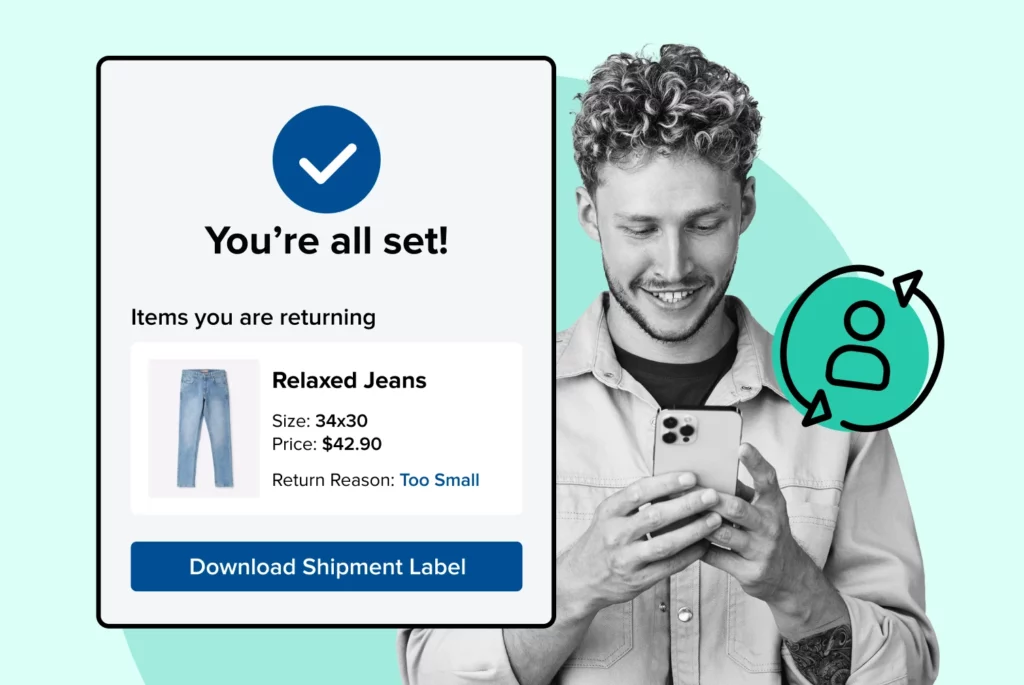
Explore the relationship between returns and customer loyalty: the importance of implementing strategic returns and retention practices.

Let’s explore how you can harness the power of return notification emails to enhance customer journeys and boost your e-commerce success.
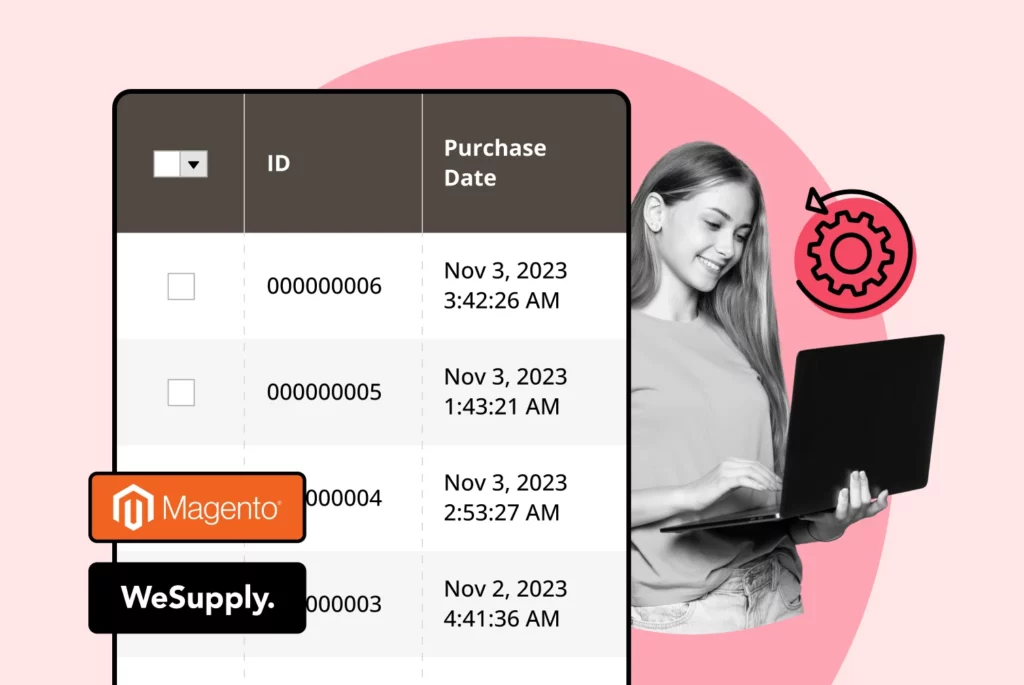
Enhanced customer satisfaction, increased efficiency, and business growth. Unlock the full potential of automation for your Magento store!
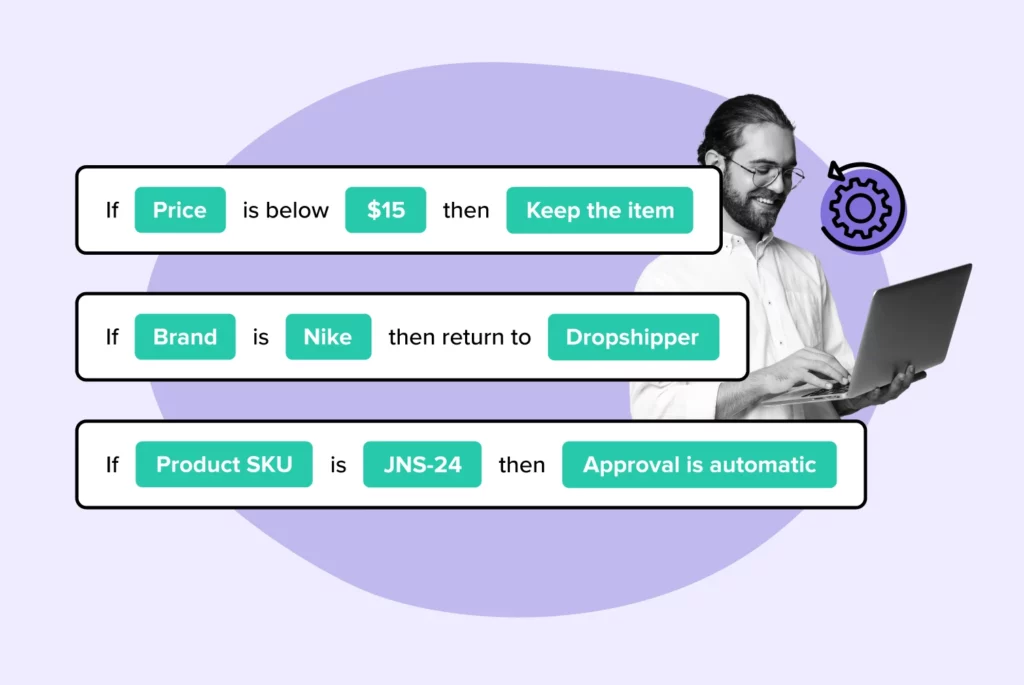
Discover the world of return automation rules: their transformative power, types, advantages, and best practices for implementation.
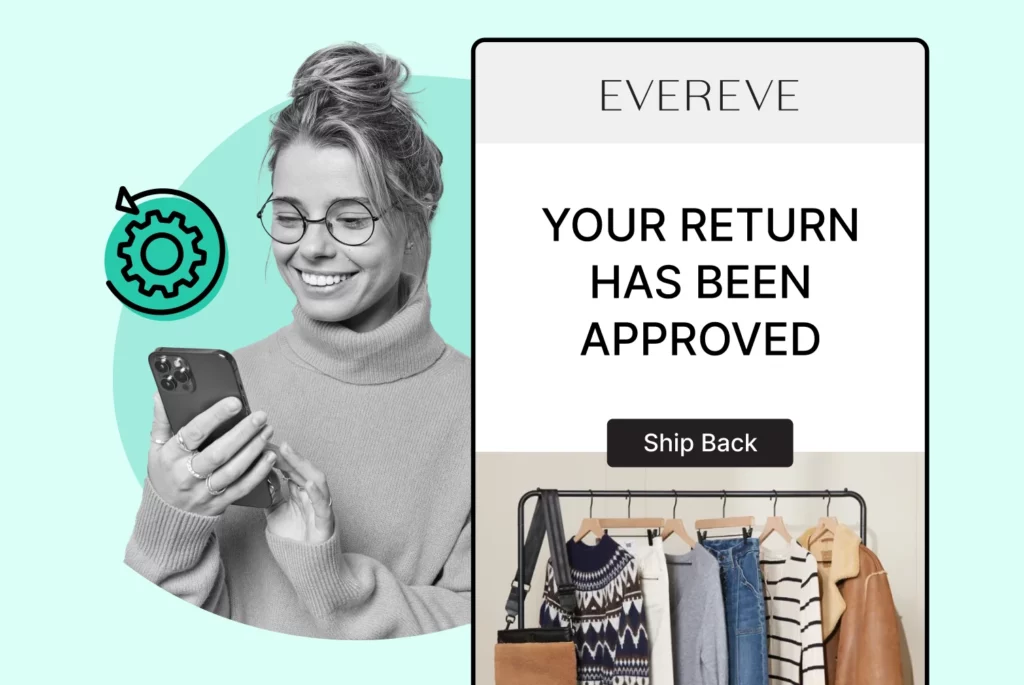
Discover how Return Merchandise Authorization (RMA) automation has led to improved efficiency, customer experience, and overall growth.
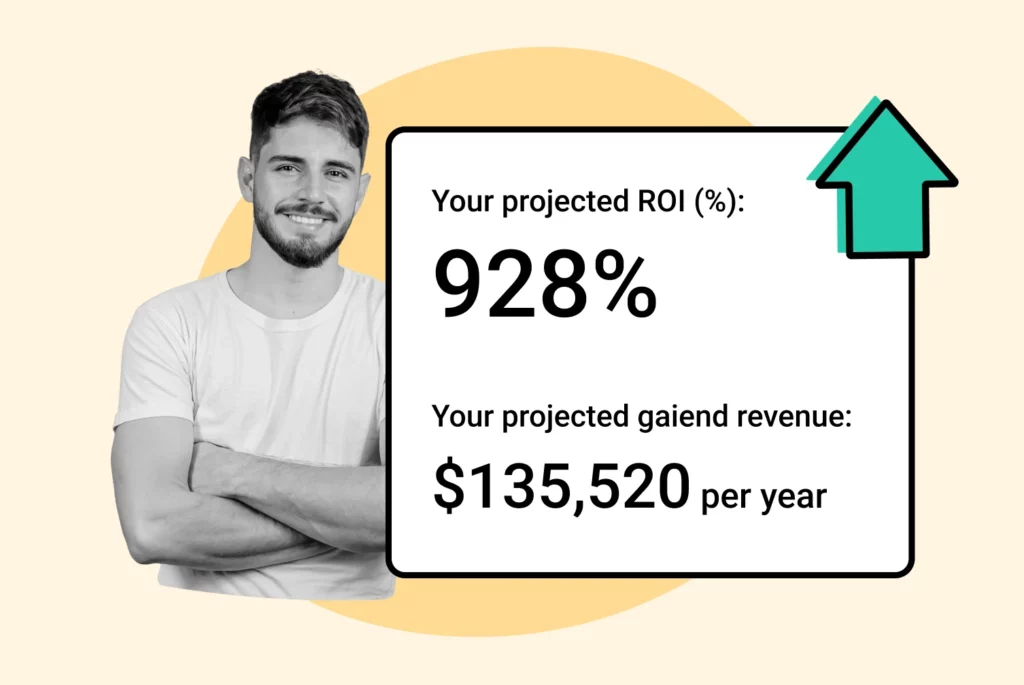
Automated returns process: streamline operations, reduce costs, enhance customer satisfaction, and boost ROI returns automation.

Explore the importance of returns automation ecommerce, the key components of an automated returns system, and real-life success stories.
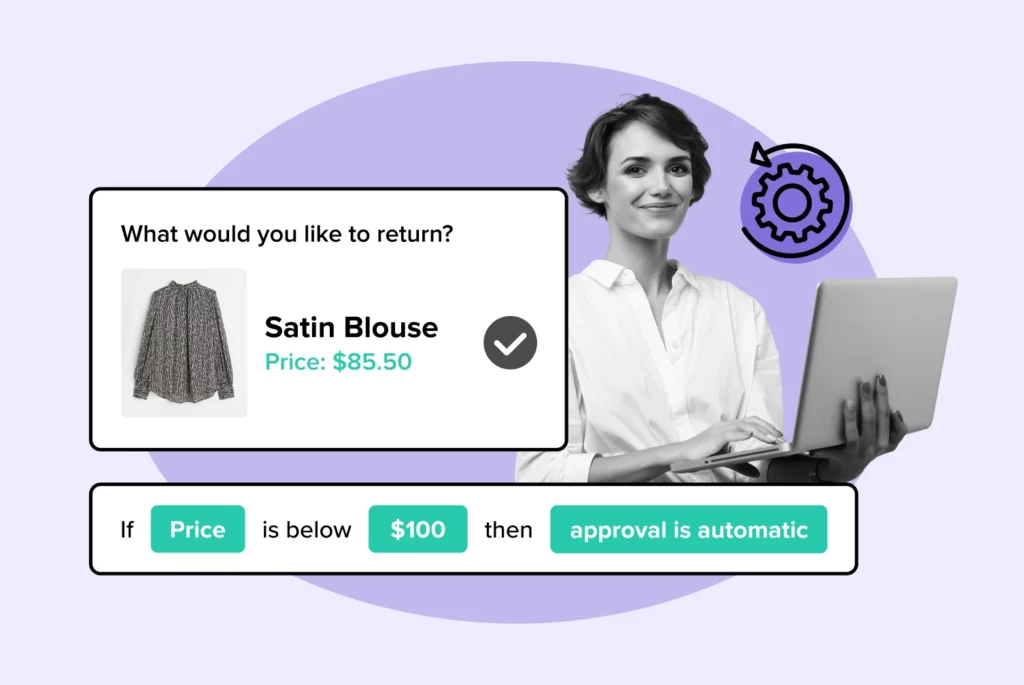
Discover how automated returns management can deliver increased customer satisfaction, operational efficiency, and sustainability!